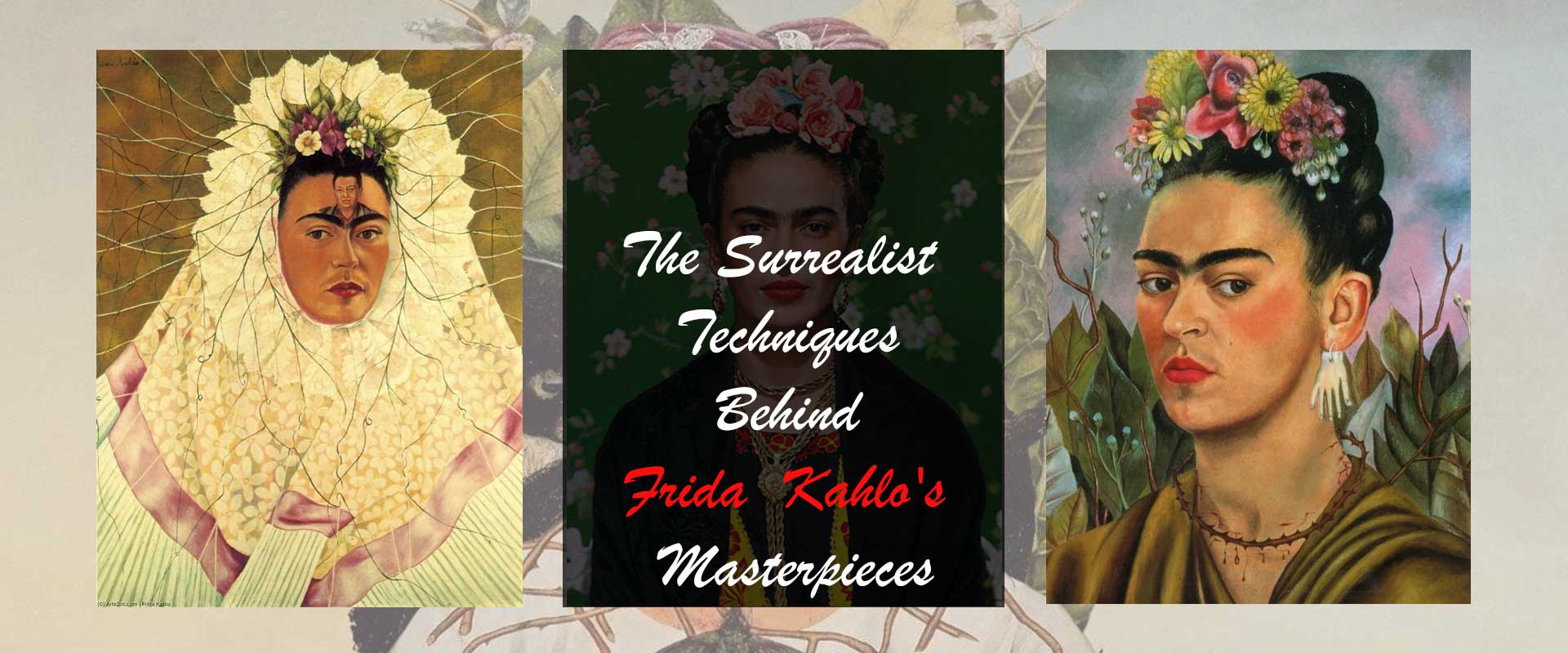Frida Kahlo is often associated with Surrealism, yet she famously rejected the label, insisting that she painted her own reality rather than dreams. Despite her resistance to the categorization, many art historians, critics, and collectors recognize distinct Surrealist techniques in her work. Her paintings often merge symbolism, personal memory, and fantastical imagery—core elements found in the Surrealist movement. Understanding these techniques not only enriches our appreciation of Kahlo’s art but also reveals the complex interplay between personal expression and artistic categorization. Whether studying her paintings in a museum or viewing curated selections like the Frida Kahlo Wall Art Prints, one can see that her work embodies a dreamlike visual language deeply tied to her lived experience.
Surrealism in Context: What It Meant in Kahlo’s Time
Surrealism emerged in the early 20th century as a literary and artistic movement aimed at unlocking the unconscious mind. Artists like Salvador Dalí and René Magritte used dream imagery, illogical juxtapositions, and symbolic objects to explore deeper truths. Frida Kahlo’s life overlapped with the height of Surrealism’s influence, and she befriended André Breton, the movement’s founder. While Breton embraced Kahlo as a Surrealist, she maintained that her paintings were grounded in reality—her reality—crafted through a deeply personal symbolic vocabulary.
Key Surrealist Techniques Found in Kahlo’s Work
| Surrealist Technique | How Kahlo Applied It | Example Painting |
|---|---|---|
| Dreamlike Imagery | Figures and objects appear in suspended, illogical spaces | The Two Fridas (1939) |
| Symbolic Objects | Animals, plants, and cultural icons loaded with meaning | Self-Portrait with Thorn Necklace and Hummingbird (1940) |
| Juxtaposition of Reality and Fantasy | Hyper-realistic portraits with impossible scenarios | What the Water Gave Me (1938) |
| Symbolic Anatomy | Use of the body as a surreal landscape | The Broken Column (1944) |
| Autobiographical Surrealism | Personal pain transformed into dreamlike scenes | Henry Ford Hospital (1932) |
Dreamlike Imagery
Many of Kahlo’s paintings have the floating, weightless quality associated with Surrealist art. Figures and objects exist in suspended space, disconnected from realistic physical constraints. In The Two Fridas, the doubled self-portrait floats against a stormy backdrop, with arteries connecting and bleeding between the two figures—a visual impossibility grounded in emotional truth.
Symbolic Objects
Kahlo incorporated recurring symbols such as monkeys, birds, plants, medical devices, and indigenous Mexican artifacts. Like Surrealists, she infused these symbols with layers of personal and cultural meaning. This symbolic depth can also be seen in works discussed in the article Frida Kahlo’s Impact on Contemporary Art and Pop Culture, where her imagery continues to influence modern creators.
Juxtaposition of Reality and Fantasy
Kahlo merged hyper-realistic detail with impossible scenarios, a hallmark of Surrealist technique. Everyday objects coexist with fantastical elements, creating tension between familiarity and strangeness. This blend makes her art feel simultaneously intimate and otherworldly.
Autobiographical Surrealism
While Surrealists often mined the unconscious, Kahlo drew from conscious recollections of her physical and emotional pain, transforming them into symbolic tableaux. This personal focus distinguished her from peers while still employing Surrealist visual strategies.
How Kahlo’s Style Diverged from Classic Surrealism
While Kahlo shared the visual language of Surrealism, she diverged in intent. Surrealists often sought to escape reality, but Kahlo confronted it directly, using fantastical elements to articulate truths about identity, illness, and love. Her work was more autobiographical and politically engaged than the dreamscapes of her European contemporaries.
The Role of Mexican Identity in Her Surrealist Approach
Kahlo’s blending of Surrealist methods with Mexican cultural motifs created a hybrid style that was uniquely hers. Indigenous symbols, folk art patterns, and pre-Columbian imagery appear alongside dreamlike distortions. This cultural grounding reinforced her rejection of Surrealism as a foreign movement, even as she used its tools.
Case Studies: Surrealist Techniques in Specific Works
In Self-Portrait with Thorn Necklace and Hummingbird (1940), Kahlo places symbolic animals and objects around her in a still, dreamlike arrangement. The lifeless hummingbird, black cat, and monkey carry personal and cultural meanings that create a multi-layered reading of the piece. In The Broken Column (1944), she depicts herself split open, revealing a crumbling column for a spine—transforming anatomy into surreal architecture. In What the Water Gave Me (1938), a bathtub scene overflows with miniature vignettes—a floating volcano, childhood memories, and political imagery—interwoven in a stream-of-consciousness visual flow.
The Impact of Surrealist Techniques on Modern Perception of Kahlo
Today, audiences often approach Kahlo’s work expecting dreamlike storytelling. This perception is shaped by decades of academic writing linking her to Surrealism and by the shared visual vocabulary she used. For modern collectors and art lovers, her paintings act as a bridge between cultural realism and the global Surrealist movement.
Surrealist Influence on Her Legacy in Popular Culture
Kahlo’s symbolic self-portraiture has influenced fashion photography, music videos, and contemporary art installations. Her image and visual style are frequently reinterpreted, demonstrating the enduring resonance of her dream-infused realism.
Balancing Artistic Labels with Individual Identity
Frida Kahlo’s relationship with Surrealism reflects a broader conversation about how we categorize artists. While her techniques align with the movement, her motivations were deeply personal. She resisted labels, defining herself on her own terms.
Why This Matters for Collectors and Students
Understanding the Surrealist aspects of Kahlo’s work helps art students and collectors place her paintings in a wider historical context. When browsing artist-focused selections like Artists, this knowledge deepens appreciation for her style and its lasting influence.
Conclusion
The Surrealist techniques in Frida Kahlo’s art—dreamlike compositions, symbolic objects, and reality-fantasy juxtapositions—serve as powerful tools for expressing her inner world. While she rejected the label of Surrealist, her work remains an essential part of the movement’s visual legacy. By blending these techniques with Mexican cultural symbolism and autobiographical detail, Kahlo created a style that is both universally relatable and intensely personal, securing her place among the most influential artists of the 20th century.





